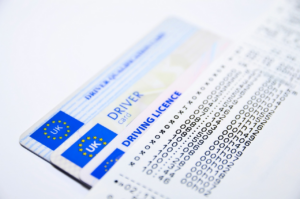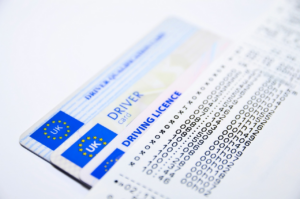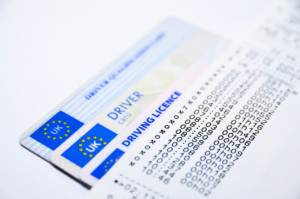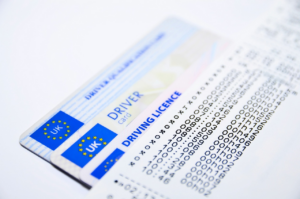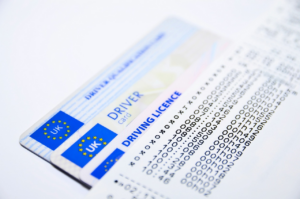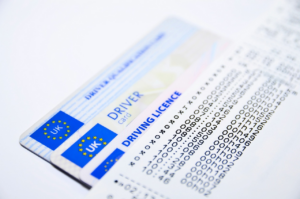Driving in urban and rural areas can be vastly different experiences. While both settings require the same set of driving skills, there are a number of differences that can impact how we navigate the roadways.
One of the most obvious differences between urban and rural driving is the level of traffic and congestion. In urban areas, you can expect to encounter heavy traffic and congestion, while in rural areas, traffic is often much lighter. As a result, you may be required to adjust your driving style and be more aware of your surroundings when driving in an urban area.
In this article, we will explore five key differences between urban and rural driving, including traffic and congestion, road conditions, speed limits, driver attitudes, and navigation challenges. By understanding these differences, you can become a more confident and skilled driver, whether you’re navigating busy city streets or winding country roads.
Traffic and Congestion
You’ll notice that traffic and congestion can vary greatly depending on the area in which you’re operating your vehicle. In urban areas, you’re likely to encounter heavy traffic during rush hour, with long lines of vehicles inching along at a slow pace.
In rural areas, on the other hand, traffic is generally lighter, with fewer vehicles on the road and less congestion.
The reasons for these differences are varied. In urban areas, there are often more people commuting to work, school, or other destinations, leading to higher levels of traffic. Additionally, there are often more businesses and attractions in urban areas, leading to more vehicles on the road.
In rural areas, however, there are often fewer people and fewer attractions, which leads to less traffic. Of course, there are exceptions to these generalizations, but overall, you can expect traffic and congestion to be significantly different in urban and rural areas.
Road Conditions
Watch out for unexpected bumps and potholes on the road, especially if you’re used to driving on smoother streets. Rural areas tend to have less well-maintained roads, which can make driving more challenging.
While urban drivers may be used to navigating through traffic, they may not be prepared for the rough terrain that comes with driving in rural areas. In addition to potholes, rural roads may have other hazards such as gravel, loose dirt, and uneven surfaces. These can affect the handling of your vehicle and make it harder to maintain control, especially at high speeds.
It’s important to adjust your driving accordingly, slowing down and being extra cautious when driving on these types of roads. By being aware of the road conditions and adjusting your driving habits accordingly, you can stay safe on rural roads and avoid potential accidents.
Speed Limits
When you hit the road, it’s important to keep in mind that speed limits can vary depending on whether you’re driving in an urban or rural area.
In urban areas, speed limits tend to be lower due to the increased pedestrian and vehicular traffic.
On the other hand, in rural areas with less traffic, higher speed limits may be posted.
It’s important to always be aware of the posted speed limit and adjust your driving accordingly to ensure safety on the road.
Lower speed limits in urban areas
If you’re used to driving on highways, it’s important to remember that lower speed limits in urban areas can catch you off guard.
In cities and towns, speed limits are typically between 25-35 mph. These lower limits are in place for a reason: to keep pedestrians, cyclists, and drivers safe in a densely populated area.
Lower speed limits also mean that you need to be more alert when driving in urban areas. You’ll need to pay attention to traffic lights, stop signs, and crosswalks, and be prepared to slow down or stop at a moment’s notice.
It’s important to be aware of your surroundings and drive defensively, as there may be unexpected obstacles or hazards on the road. By following the speed limit and driving carefully, you can help prevent accidents and keep yourself and others safe.
Higher speed limits in rural areas
You’ll be surprised at how dangerous it can be to speed on rural roads with higher speed limits, putting yourself, your passengers, and other drivers at risk.
While speed limits in rural areas are higher, the roads themselves can be more hazardous than urban roads. For one, rural roads tend to be narrower and winding, with fewer lanes and little to no dividing lines. This means that cars traveling at high speeds will have less room to maneuver, increasing the likelihood of collisions and making it harder to avoid obstacles like wildlife or fallen branches.
In addition, rural areas often have less traffic, leading drivers to let their guard down and take more risks. However, this can be a fatal mistake, as rural roads also tend to have more blind corners and dips in the road, making it harder to anticipate oncoming traffic or sudden changes in the road surface.
Moreover, emergency services may take longer to arrive in rural areas, meaning that any accidents that do occur are more likely to have severe consequences.
In short, while the higher speed limits on rural roads may be tempting, it’s crucial to remember that these roads can be just as dangerous as urban roads, if not more so.
Driver Attitudes
When it comes to driver attitudes, you’ll notice a stark difference between urban and rural areas.
In busy city streets, you may encounter more aggressive driving behaviors such as honking, tailgating, and speeding.
On the other hand, rural roads tend to have more relaxed drivers who take their time and are less likely to engage in risky maneuvers.
It’s important to be aware of these differences and adjust your driving accordingly to ensure a safe and pleasant journey.
Aggressive driving in urban areas
Aggressive driving in the city can be dangerous and lead to road rage incidents. With the higher population density, traffic congestion, and impatience, urban areas can quickly become a breeding ground for aggressive driving.
Here are some reasons why aggressive driving tends to be more prevalent in urban areas:
-
Time constraints: With the hustle and bustle of city life, everyone seems to be in a hurry. Drivers are often rushing to get to their destination, leading to impatience and frustration when stuck in traffic.
-
Traffic congestion: Heavy traffic can be frustrating, leading drivers to become aggressive in their attempts to get ahead of others on the road.
-
Competition: In urban areas, drivers are often competing for limited parking spaces, lanes, and opportunities to get ahead. This can lead to aggressive driving behaviors such as tailgating, cutting off other drivers, and honking excessively.
-
Anonymity: In a city, it’s easy to feel anonymous. This can lead to drivers feeling emboldened to behave more aggressively because they don’t feel like they’ll be held accountable for their actions.
While aggressive driving may feel like a way to get ahead, it’s important to remember that it can be incredibly dangerous. It can lead to accidents, road rage incidents, and even fatalities. In urban areas, it’s especially important to be patient and cautious on the road.
The next time you find yourself feeling frustrated while driving in the city, take a deep breath and remember that everyone else on the road is just trying to get where they need to go. By staying calm and driving defensively, you can help keep yourself and others safe on the road.
More relaxed driving in rural areas
In more remote areas, drivers tend to adopt a more laid-back approach to their time on the road. This is partly due to the fact that there are generally fewer cars on the road, and therefore less competition for space.
Additionally, rural roads tend to be less congested and have lower speed limits, which can make for a more relaxed driving experience. Another factor that contributes to the more relaxed driving style in rural areas is the scenery.
Driving through the countryside can be a pleasant and calming experience, with plenty of opportunities to take in the natural beauty around you. This can help to reduce stress and make for a more enjoyable journey.
Of course, it’s important to remain vigilant and aware of your surroundings at all times, even on quiet rural roads. But overall, the slower pace of life in rural areas can lead to a more relaxed and enjoyable driving experience.
Navigation Challenges
As you navigate through unfamiliar territories, figuring out directions and landmarks becomes trickier. In rural areas, roads are often winding and can be confusing to navigate. There are fewer street signs and landmarks, which means you need to rely more on your sense of direction and your ability to read a map.
Additionally, GPS systems may not always be accurate in rural areas, so it’s important to have a backup plan in case you get lost. Another challenge when it comes to navigation in rural areas is the lack of streetlights. Without proper lighting, it can be difficult to see the road ahead, especially at night.
This can make it harder to spot road signs and landmarks, which can lead to missed turns and confusion. It’s important to take extra precautions when driving at night in rural areas, such as reducing your speed and using your headlights to illuminate the road ahead.
By being aware of these navigation challenges, you can better prepare yourself for driving in rural areas and ensure a safe and smooth journey.
Weather Conditions
You’ll need to be aware of the various weather conditions that can affect your driving in rural areas, as they can often be more extreme than in urban areas.
For example, heavy rain can cause flooding and mudslides, making roads slippery and difficult to navigate. In addition, rural areas may not have the same level of road maintenance as urban areas, so potholes and other hazards can be more prevalent.
Another weather condition to watch out for in rural areas is fog. Fog can be particularly dangerous because it can reduce visibility to near zero, making it difficult to see other vehicles or even the road ahead.
It’s important to slow down and use your headlights in foggy conditions, and to avoid using high beams as they can reflect off the fog and make visibility worse. Overall, it’s important to be prepared for a variety of weather conditions when driving in rural areas, as they can be more extreme and unpredictable than in urban areas.
Safety Concerns
When driving in urban areas, you face a higher risk of accidents due to the sheer amount of traffic and pedestrians.
Wildlife collisions are a concern in rural areas, especially during certain times of the year and in remote locations.
It’s important to remain alert and cautious when driving in both urban and rural areas to ensure your safety and the safety of those around you.
Higher risk of accidents in urban areas
You’re more likely to have a car accident in the city than in the countryside due to the higher risk factors that come with urban driving.
The following are some reasons why city driving poses a greater risk of accidents:
-
Heavy traffic: Urban areas are characterized by high volumes of traffic, which can cause congestion and increase the likelihood of collisions. With more cars on the road, there are more opportunities for accidents to occur.
-
Pedestrians and cyclists: Cities are also home to a higher number of pedestrians and cyclists, who share the road with cars. This can be particularly dangerous since pedestrians and cyclists are more vulnerable to injuries in the event of an accident.
-
Road design: Urban roads are often designed to accommodate a large number of vehicles, which can lead to complex intersections, confusing traffic patterns, and the need for sudden lane changes. This, coupled with the presence of pedestrians and cyclists, can make for a challenging driving environment that requires a high level of skill and attention.
In conclusion, while driving in rural areas may come with its own set of challenges, the risk of accidents is generally lower than in the city. It’s important to be aware of the unique risks associated with urban driving and to take extra precautions to ensure your safety and the safety of others on the road.
Wildlife collisions and remote locations in rural areas
Now that we’ve discussed the higher risk of accidents in urban areas, let’s turn our attention to the unique challenges of driving in rural areas.
While urban drivers may face heavy traffic and congested roads, rural drivers must contend with a variety of other hazards, including wildlife collisions and remote locations.
One of the biggest dangers of rural driving is the potential for wildlife collisions. Animals such as deer, moose, and elk are common in rural areas, and they can often dart out onto the road unexpectedly. These collisions can be deadly for both the animal and the driver, and they are more likely to occur in the early morning or evening hours.
In addition to wildlife, rural drivers must also be aware of other hazards such as narrow, winding roads and poor visibility due to fog or inclement weather. The remote nature of many rural roads means that help may be far away in case of an accident, so it’s important to take extra precautions and be prepared for emergencies.
Vehicle Maintenance
When it comes to vehicle maintenance, you need to pay attention to the wear and tear on your brakes in urban areas. The constant stop-and-go traffic can be tough on brakes, so it’s important to keep them in good condition.
Additionally, dirt and gravel on rural roads can affect your vehicle’s performance, so make sure to regularly clean and inspect your car to avoid any potential issues.
Wear and tear on brakes in urban areas
Brakes take a beating in city traffic, causing more wear and tear compared to driving on country roads. In urban areas, drivers frequently use their brakes due to stop-and-go traffic, traffic lights, and intersections. This constant braking results in more heat buildup and higher wear on the brake pads and rotors.
Additionally, the heavy traffic in urban areas means that drivers are typically driving at slower speeds, which means they are using their brakes more frequently and for longer periods of time. Furthermore, the driving conditions in urban areas can also contribute to increased brake wear. For example, drivers in cities may need to brake suddenly to avoid pedestrians, bicycles, or other vehicles.
This sudden and frequent braking can put additional strain on the brake system, causing it to wear out faster. In contrast, driving on rural roads typically involves less braking, as drivers are able to maintain a more consistent speed and encounter fewer traffic lights and intersections. As a result, the wear and tear on brakes in rural areas is typically less severe than in urban areas.
Dirt and gravel on rural roads affecting vehicle performance
You may have noticed that dirt and gravel on rural roads can have a significant impact on how your vehicle performs. The rough terrain and loose gravel can cause your tires to lose traction, making it difficult to maintain control of your vehicle. This is especially true for vehicles with rear-wheel drive, which have less weight on the front wheels to provide traction.
In addition, dirt and gravel can also damage your vehicle’s undercarriage and suspension system. The constant jostling and impact of driving on rough terrain can cause parts to wear down faster, leading to costly repairs down the road.
To avoid these problems, it’s important to drive carefully and at a slower speed on rural roads. Be sure to keep your tires properly inflated and consider upgrading to all-terrain tires if you frequently drive on unpaved roads. Regular maintenance and inspections can also help prevent damage to your vehicle.
Frequently Asked Questions
How does the availability of public transportation differ between urban and rural areas?
If you’re living in an urban area, you’re likely to have more options when it comes to public transportation than if you’re living in a rural area. In cities, you can expect to find a variety of options such as buses, subways, and trains that can take you to different parts of the city. These options tend to be more frequent and run on scheduled routes, making it easier to get around.
On the other hand, in rural areas, public transportation tends to be less frequent and often limited to buses that run on specific routes, making it more difficult to get around without a personal vehicle. This can make rural living more challenging for those who rely on public transportation.
Are there any specific road hazards or obstacles unique to driving in a rural area?
As you navigate rural roads, you may come across unique road hazards and obstacles that require extra caution.
For example, you may encounter wandering livestock, such as cows or horses, on the roadway. Additionally, dirt and gravel roads may have potholes, loose gravel, and sudden changes in elevation that can be hazardous to your vehicle.
It’s also important to be aware of wildlife that may dart across the road, such as deer or elk. In rural areas, emergency services may not be as readily available, so it’s important to exercise caution and drive defensively to avoid accidents.
Are there any cultural differences in driving behaviors between urban and rural areas?
When it comes to cultural differences in driving behaviors between urban and rural areas, there are a few things to consider.
In urban areas, drivers tend to be more aggressive and impatient due to the higher volume of traffic and crowded streets. On the other hand, rural drivers tend to be more relaxed and patient, as they often have longer distances to travel and encounter less traffic.
Additionally, rural drivers may be more accustomed to navigating unpaved roads, while urban drivers are more likely to encounter obstacles such as pedestrians and bicyclists.
Overall, while there may be some differences in driving behaviors between urban and rural areas, it’s important to remember to always drive defensively and be aware of your surroundings regardless of your location.
How do emergency response times vary between urban and rural areas?
When it comes to emergency response times, there are significant differences between urban and rural areas.
In urban areas, emergency services can typically respond quickly due to the high concentration of resources and infrastructure.
However, in rural areas, emergency responders often face challenges such as longer travel times, difficult terrain, and limited resources.
This can result in longer response times and potentially slower access to critical care.
It’s important to consider these differences when planning emergency response strategies and allocating resources to ensure that all communities receive the necessary care in a timely manner.
What are the differences in wildlife encounters while driving in urban versus rural areas?
When it comes to wildlife encounters while driving, there are significant differences between urban and rural areas. In urban areas, wildlife encounters are generally less frequent and less severe. You may occasionally come across a squirrel or a bird, but larger animals are rare.
In rural areas, however, wildlife encounters are much more common. Deer, elk, moose, and other large animals are often found near roads and highways, and collisions with these animals can be dangerous and even deadly. It’s important to be aware of your surroundings and drive cautiously in rural areas to avoid these potential hazards.
Conclusion
So there you have it, five key differences between urban and rural driving. While both types of driving come with their own unique challenges and advantages, it’s important to be aware of these differences so that you can adjust your driving style accordingly.
Whether you’re navigating through city traffic or cruising down a country road, always remember to stay alert, follow the rules of the road, and prioritize safety above all else. By doing so, you can make the most of your driving experience, no matter where your travels take you.
Safe driving!












































